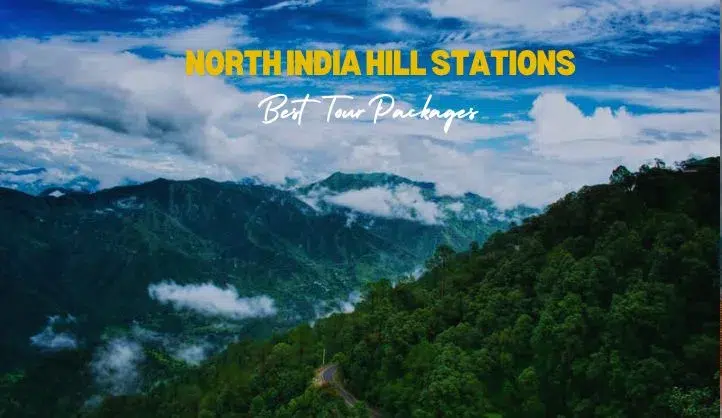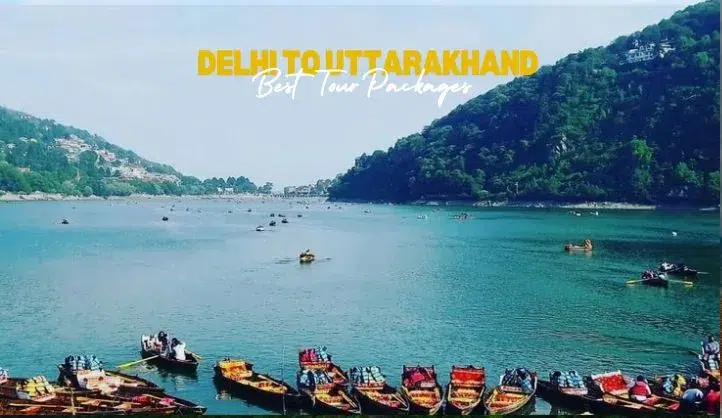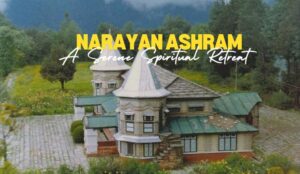Gaumukh, a place of immense spiritual and geographical significance, is where the sacred Ganges River, known as the Bhagirathi at this point, begins its journey from the Gangotri Glacier. Located in the state of Uttarakhand, India, Gaumukh is revered not only for its religious importance but also for its stunning natural beauty and the challenging trek that leads to it. This article will take you through the various facets of Gaumukh, from its mythological significance to practical trekking tips, ensuring a comprehensive understanding of this sacred destination.
Gaumukh, literally translating to “Cow’s Mouth,” is the terminus of the Gangotri Glacier and the source of the Bhagirathi River, one of the primary headstreams of the Ganges. The site is located at an altitude of 4,023 meters (13,200 feet) in the Garhwal Himalayas, and it is one of the most revered pilgrimage spots in Hinduism. The trek to Gaumukh is not just a journey through the Himalayas but a spiritual quest, often undertaken by devout Hindus and adventure enthusiasts alike.
Historical and Mythological Significance
The Ganges holds a unique place in Hindu mythology and is considered the most sacred river in India. According to legend, King Bhagiratha performed severe penance to bring the Ganges down to Earth from the heavens to purify the ashes of his ancestors. Moved by his devotion, the river goddess Ganga descended from the heavens, and Lord Shiva captured her in his locks to reduce the impact of her fall. The place where she first touched Earth is believed to be Gaumukh.
This mythological tale endows Gaumukh with its profound religious significance. Pilgrims believe that a visit to Gaumukh and a dip in its icy waters can wash away sins and grant salvation.
Geographical Features
Gaumukh is situated in the Garhwal region of Uttarakhand, within the boundaries of the Gangotri National Park. The Gangotri Glacier, from which the Bhagirathi River emerges, is one of the largest glaciers in the Himalayas, spanning about 30 kilometers in length. The glacier is a part of the larger Himalayan glacier system and is surrounded by towering peaks such as Shivling, Thalay Sagar, Meru, and Bhagirathi group of peaks.
The area is characterized by its rugged terrain, steep inclines, and unpredictable weather. The glacier itself is a spectacular sight, with its crevasses, ice formations, and pristine waters flowing out from its mouth. The landscape is dotted with moraines, boulders, and alpine meadows, making it a visually stunning yet challenging environment.
Map Of Gaumukh
How to Reach Gaumukh
Reaching Gaumukh involves a combination of road travel and trekking. Here’s a detailed guide on how to get to Gaumukh:
By Air
The nearest airport to Gaumukh is Jolly Grant Airport in Dehradun, Uttarakhand, located approximately 250 kilometers from Gangotri, the base town for the Gaumukh trek.
- Flights: Regular flights connect Jolly Grant Airport to major cities like Delhi, Mumbai, and Bengaluru. From the airport, you can hire a taxi or take a bus to Gangotri.
By Train
The nearest railway station is Rishikesh Railway Station, about 230 kilometers from Gangotri.
- Trains: Rishikesh is well-connected by train to major cities like Delhi, Haridwar, and Dehradun. From Rishikesh, you can either take a bus or hire a taxi to reach Gangotri.
By Road
Gangotri, the starting point of the trek to Gaumukh, is well-connected by road to several key cities in Uttarakhand and nearby states.
- From Dehradun: The distance from Dehradun to Gangotri is about 240 kilometers. The drive takes approximately 8-10 hours, depending on road conditions.
- From Haridwar/Rishikesh: The distance from Haridwar to Gangotri is around 270 kilometers, and from Rishikesh, it’s about 250 kilometers. The journey by road takes around 10-12 hours.
- From Uttarkashi: Gangotri is about 100 kilometers from Uttarkashi, and the drive takes about 4-5 hours. Uttarkashi is often the last major town where travelers stop to restock supplies before heading to Gangotri.
Trekking to Gaumukh
Preparations
Trekking to Gaumukh requires thorough preparation due to the high altitude and the demanding nature of the terrain. It is recommended to start training a few months in advance, focusing on building stamina, strength, and acclimatization to high altitudes. Essential gear includes sturdy trekking boots, warm clothing, a sleeping bag, and a first aid kit. Since the trek is located within a protected area, obtaining the required permits from the forest department is also necessary.
Route and Itinerary
The trek to Gaumukh typically starts from Gangotri, a small town and pilgrimage site at an altitude of 3,100 meters (10,200 feet). The town is accessible by road from major cities like Dehradun and Rishikesh. The trek from Gangotri to Gaumukh covers a distance of approximately 18 kilometers and is usually completed over two days.
Day 1: Gangotri to Chirbasa
The trail from Gangotri to Chirbasa, which means “abode of pines,” is relatively easy and offers beautiful views of the Bhagirathi peaks. The path winds through dense forests of pine and deodar, with the Bhagirathi River flowing alongside. Chirbasa serves as a popular camping site for trekkers.
Day 2: Chirbasa to Gaumukh via Bhojbasa
The trek from Chirbasa to Bhojbasa, meaning “abode of birch trees,” is slightly more challenging due to the rocky terrain and thinning air. Bhojbasa is the last inhabited place before Gaumukh and offers basic accommodation facilities. From Bhojbasa, it’s a gradual ascent to Gaumukh. The final stretch to the glacier is marked by loose rocks and a steep incline, making it the most challenging part of the trek.
Return Journey
The return journey follows the same route back to Gangotri, which can be completed in a day or split into two depending on the trekker’s pace and weather conditions.
Challenges and Tips
Trekking to Gaumukh is not without its challenges. The high altitude, coupled with unpredictable weather, can make the trek strenuous. It is essential to stay hydrated, take frequent breaks, and listen to your body to avoid altitude sickness. Hiring a local guide can also be beneficial, as they are familiar with the terrain and can assist in case of emergencies.
Flora and Fauna
Gaumukh and the surrounding areas are part of the Gangotri National Park, a protected area known for its diverse flora and fauna. The park is home to a variety of plant species, including alpine meadows, rhododendrons, and birch trees. The wildlife in the region includes the elusive snow leopard, Himalayan blue sheep (bharal), musk deer, and a variety of birds such as the Himalayan monal, snow partridge, and golden eagle.
The region’s biodiversity is a testament to the delicate balance of the ecosystem, which is influenced by the harsh climatic conditions and altitude. The flora and fauna of Gaumukh contribute to the overall experience of the trek, offering glimpses of the raw beauty and resilience of nature.
Things to Do at Gaumukh and Surrounding Areas
Gaumukh is not just a destination but an experience that offers a blend of spirituality, adventure, and natural beauty. Here are some of the best things to do when visiting Gaumukh and its surrounding areas:
Trek to Gaumukh Glacier
- The Journey: The trek to Gaumukh is a highlight of the trip. Starting from Gangotri, the trek takes you through dense forests, along the Bhagirathi River, and up to the Gaumukh Glacier, the source of the sacred Ganges River.
- Scenic Beauty: The trek offers stunning views of snow-capped peaks, including the Shivling and the Bhagirathi groups of mountains. The trek is moderately challenging and takes around 2 days to complete.
- Experience the Glacier: Upon reaching Gaumukh, you can witness the glacier’s mouth, where the river emerges. The sight of the ice-cold, pure water gushing out of the glacier is both awe-inspiring and spiritually uplifting.
Visit Gangotri Temple
- Spiritual Significance: Before starting your trek, spend some time at the Gangotri Temple, one of the four Char Dham pilgrimage sites. Dedicated to Goddess Ganga, the temple is an important pilgrimage site for Hindus.
- Rituals and Prayers: Participate in the evening aarti, a devotional ritual that takes place by the river. The serene atmosphere and the sound of hymns echoing in the mountains make it a deeply spiritual experience.
Explore the Gangotri National Park
- Wildlife and Nature: The trek to Gaumukh passes through the Gangotri National Park, home to diverse flora and fauna. Keep an eye out for rare Himalayan species like the snow leopard, Himalayan tahr, and various bird species.
- Photography: The park offers excellent opportunities for wildlife photography. The changing landscapes, from dense forests to open meadows, provide a beautiful backdrop for capturing nature at its best.
Camping at Bhojbasa
- Overnight Stay: Bhojbasa, located about 14 kilometers from Gangotri, is the last point of stay on the trek to Gaumukh. Spend a night camping here, surrounded by towering peaks and the sound of the Bhagirathi River.
- Star Gazing: The clear skies and high altitude make Bhojbasa an ideal spot for star gazing. On a clear night, you can see countless stars, including the Milky Way, making it a magical experience.
Visit the Bhairon Ghati
- Adventure and Legends: Bhairon Ghati, located a few kilometers from Gangotri, is a lesser-known but interesting spot to visit. The Bhairon Temple here is associated with local legends and is believed to protect the region from evil spirits.
- Suspension Bridge: The area is known for its thrilling suspension bridge that spans across the Jadh Ganga River. Walking across this bridge is an exhilarating experience, with the river roaring below and the dense forest all around.
Environmental Concerns
Gaumukh and the Gangotri Glacier are not immune to the impacts of climate change. Over the years, the glacier has been receding at an alarming rate, raising concerns about the long-term sustainability of the region. The retreat of the glacier not only threatens the source of the Ganges but also affects the local communities and biodiversity.
Efforts are being made to mitigate the impact of climate change, including afforestation projects, waste management initiatives, and awareness campaigns. Trekkers are encouraged to follow the principles of “Leave No Trace,” minimizing their environmental footprint by carrying back all waste and avoiding any activities that could harm the fragile ecosystem.
Cultural Importance
Gaumukh is not just a geographical location but a cultural and spiritual symbol for millions of Hindus. The Ganges River, which originates from Gaumukh, is considered the lifeblood of Indian civilization. It is worshipped as a goddess and holds a central place in various religious rituals and festivals.
The trek to Gaumukh is often seen as a pilgrimage, with many devotees braving the challenging conditions to pay their respects at the source of the Ganges. The journey is imbued with reverence and devotion, reflecting the deep cultural ties that bind the river and the people.
Nearby Places to Visit Around Gaumukh
Gaumukh, located in the serene and spiritually significant region of Uttarakhand, is surrounded by several other fascinating places worth exploring. These nearby destinations offer a mix of spirituality, natural beauty, and adventure, making your journey even more enriching.
Gangotri
Gangotri is the base from where most treks to Gaumukh begin. It is one of the four Char Dham pilgrimage sites and is dedicated to Goddess Ganga. The Gangotri Temple, located on the banks of the Bhagirathi River, attracts thousands of devotees annually. Apart from its religious significance, Gangotri is also known for its stunning natural beauty, with tall pine trees, snow-capped peaks, and the roaring river creating a picturesque setting.
Tapovan
Tapovan is a high-altitude meadow located beyond Gaumukh, known for its breathtaking views and serene atmosphere. The area is surrounded by towering peaks, including the famous Shivling, and is a popular spot for trekkers and nature enthusiasts. Tapovan is also known for its spiritual significance, with many sadhus (holy men) choosing it as a place for meditation and spiritual practice.
Bhojbasa
Bhojbasa is a popular stopover for trekkers on their way to Gaumukh. It is located in a picturesque valley surrounded by majestic mountains. The site offers basic accommodation facilities and is an ideal place to rest and acclimatize before continuing the trek to Gaumukh. The area is named after the Bhojpatra trees, which were once abundant here and whose bark was used for writing ancient scriptures.
Kedartal
Kedartal, also known as Shiva’s Lake, is a glacial lake situated at a height of 4,750 meters. The trek to Kedartal is challenging but rewarding, with mesmerizing views of peaks like Thalay Sagar, Bhrigupanth, and Meru. The turquoise waters of the lake, surrounded by towering mountains, create a surreal and tranquil atmosphere. Kedartal is a less-visited gem, perfect for those seeking solitude and connection with nature.
Bhairon Ghati
Bhairon Ghati is known for its spiritual and adventurous appeal. It is home to the Bhairon Temple, dedicated to Bhairon Nath, a fierce form of Lord Shiva. The temple is set amidst dense forests and cliffs, adding to its mystique. The area is also known for its thrilling suspension bridge over the Jadh Ganga River, providing a breathtaking view of the deep gorge below.
Uttarka shi
Uttarkashi is a significant town in the Garhwal region and serves as a gateway to many spiritual and trekking destinations. The town is home to the famous Vishwanath Temple, dedicated to Lord Shiva, and other important temples like Shakti Temple and Ekadash Rudra Temple. Uttarkashi is also known for its ashrams and educational centers that attract spiritual seekers from around the world.
Kedarnath
Kedarnath is one of the holiest Hindu temples dedicated to Lord Shiva and is part of the Char Dham pilgrimage. Situated amidst the majestic Kedarnath Range, the temple is surrounded by stunning natural beauty, making it a spiritually and visually captivating destination. Pilgrims often visit Kedarnath after their journey to Gaumukh and Gangotri, completing a significant spiritual circuit.
Vishwanath Temple, Uttarkashi
The Vishwanath Temple in Uttarkashi is a revered shrine dedicated to Lord Shiva. It is one of the most important religious sites in Uttarakhand, and its tranquil setting by the Bhagirathi River makes it a peaceful place for worship and reflection. The temple’s simple yet powerful architecture and its serene environment attract pilgrims and visitors alike.
Nelong Valley
Nelong Valley, often compared to Ladakh for its barren and rugged landscape, is located near the India-China border. This remote valley was opened to tourists only a few years ago and offers stunning views of the Trans-Himalayan region. The valley is known for its unique flora and fauna, ancient trade routes, and the famous Gartang Gali, a wooden bridge suspended over a deep gorge.
Dayara Bugyal
Dayara Bugyal is one of the most beautiful meadows in Uttarakhand, located at an altitude of 3,408 meters. The vast expanse of lush green meadows, surrounded by snow-capped peaks, is a sight to behold. In winter, the area turns into a popular skiing destination. The trek to Dayara Bugyal is relatively easy and offers panoramic views of the surrounding mountains.
Travel Tips
- Best Time to Visit: The best time to visit Gaumukh is between May and October when the weather is relatively stable, and the trekking routes are accessible. The monsoon season should be avoided due to the risk of landslides.
- Stay: Stay options in Gangotri include guesthouses and ashrams. Bhojbasa offers basic facilities, but it is advisable to carry your camping gear.
- Permits: Obtain the necessary permits from the forest department in advance, as the number of trekkers allowed is limited to preserve the environment.
- Health Precautions: Carry a first aid kit, and medications for altitude sickness, and stay hydrated throughout the trek. It’s also recommended to undergo a medical check-up before embarking on the trek.
Conclusion
Gaumukh is a destination that transcends the boundaries of a mere trekking route. It is a place where nature, spirituality, and adventure converge, offering an experience that is as enriching as it is challenging. Whether you are a devout pilgrim seeking spiritual solace or an adventurer in search of nature’s pristine beauty, Gaumukh promises an unforgettable journey. As you stand at the source of the mighty Ganges, surrounded by the towering peaks of the Himalayas, you are reminded of the enduring power and grace of nature—a force that shapes not just the landscape, but the lives and beliefs of millions.
FAQs about Gaumukh
1. What is Gaumukh, and why is it significant?
Gaumukh, located in Uttarakhand, India, is the terminus of the Gangotri Glacier and the source of the Bhagirathi River, one of the primary tributaries of the Ganges River. It holds immense religious significance as the origin of the Ganges, which is considered sacred in Hinduism. Pilgrims and trekkers visit Gaumukh to witness this spiritual and natural wonder.
2. How difficult is the trek to Gaumukh?
The trek to Gaumukh is moderately challenging, covering approximately 18 kilometers from Gangotri. The trail involves walking on rocky terrain and crossing streams, with altitudes reaching over 4,000 meters. While it is manageable for fit individuals, proper preparation and acclimatization are essential for a safe and enjoyable trek.
3. What is the best time to visit Gaumukh?
The best time to visit Gaumukh is between May and October when the weather is relatively mild and the trekking routes are accessible. During this period, the snow has melted, and the trail offers clear views of the surrounding peaks. The monsoon season (July to September) can bring heavy rains, so planning accordingly is important.
4. Are there any permits required for the Gaumukh trek?
Yes, trekkers need to obtain permits from the Forest Department at Uttarkashi or Gangotri to visit Gaumukh. The area is part of the Gangotri National Park, and the permits help regulate the number of visitors to protect the fragile environment. It’s advisable to arrange permits in advance, especially during peak trekking season.
5. What should I pack for the Gaumukh trek?
For the Gaumukh trek, it’s important to pack warm clothing, including thermal layers, a waterproof jacket, and sturdy trekking shoes. Other essentials include a sleeping bag, a good-quality backpack, a first aid kit, water purification tablets, energy snacks, and trekking poles. Due to the high altitude, sunblock, sunglasses, and a hat are also recommended to protect against UV rays.
6. Can I visit other places near Gaumukh during my trip?
Yes, there are several fascinating places to explore near Gaumukh, including Gangotri, Tapovan, Bhojbasa, and Kedartal. Each destination offers unique experiences, from spiritual visits to ancient temples to adventurous treks through stunning landscapes. These nearby places make for an enriching and diverse itinerary around Gaumukh.









